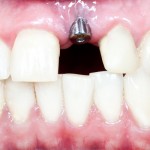
The aesthetic appearance of the soft tissues following dental implant placement is an important consideration and potential more of an issue with immediate placement. The aim of this review was to compare the aesthetic (soft tissue) outcomes of immediate (type 1) verses conventional (type 3) implant placement.
Searches were conducted in PubMed, Embase, and the Cochrane Central Register of Controlled Trials with no language restrictions. This was supplemented with handsearching of a number of relevant clinical journals. Only studies with a minimum of 10 patients reporting restorations supported by single implants and reporting the pink aesthetic score (PES) . Study selection, assessment of study quality and data abstraction was conducted independently by two reviewers. A descriptive summary of the included studies was provided.
- 8 studies were included (1 randomised controlled trial, 3 prospective studies and 4 retrospective studies. Follow-up periods ranged from 6- 48 months.
- 4 studies reported mean PES values following type 1 implant placement compared with type 3 implant placement. No significant differences were reported.
The authors concluded
According to the current evidence, short-term esthetic outcomes of peri-implant soft tissue did not show significant difference following type 1 and type 3 implants placement with well-selected patients. However, caution should be taken for clinicians to extrapolate this result to all types of patients, as more randomized clinical trials are needed for long-term soft-tissue esthetic outcome in patients with high esthetic risk following type 1 implant placement. PES frequency, peri-implant condition and other risk factors for peri-implantitis are recommended to be reported for future studies.
Comment
There is a clear focus to this review and the use of the PES score which was only introduced in 2005 limits the number of available studies. While the quality of the studies was assessed, only one RCT is included and as the authors note the risk of bias in the other study designs in high. The number of implants in the included studies is noted but not the number of patient which would have been a useful addition. The authors point to the fact that the patients have been well selection and that caution should be taken not to extrapolate the findings. However caution should be exercised because of the quality of the available evidence.
Links
Shi JY, Wang R, Zhuang LF, Gu YX, Qiao SC, Lai HC. Esthetic outcome of single implant crowns following type 1 and type 3 implant placement: a systematic review. Clin Oral Implants Res. 2014 Jan 23. doi: 10.1111/clr.12334. [Epub ahead of print] PubMed PMID: 24450873.
